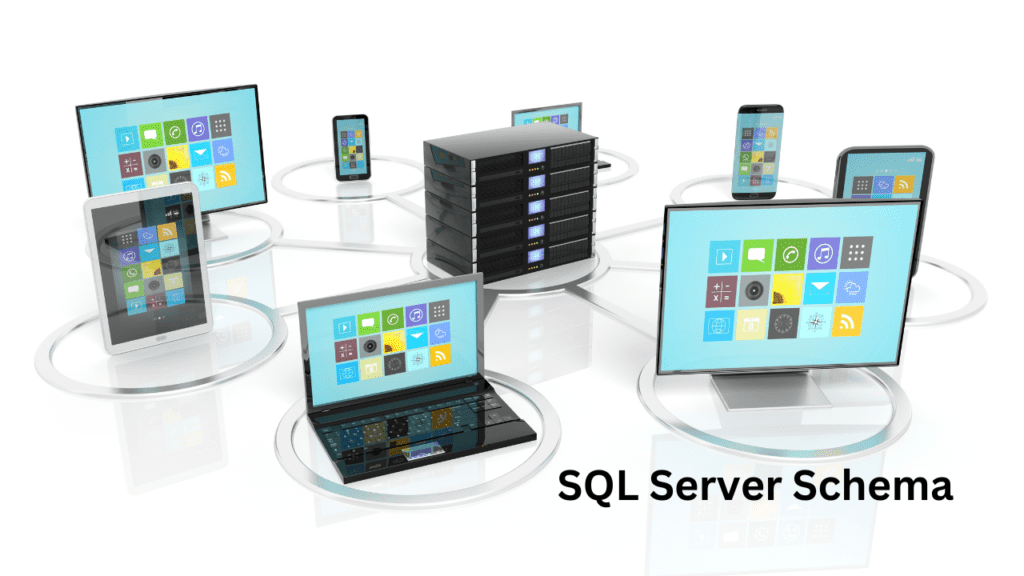Migrating from Oracle to SQL Server is a significant undertaking, and understanding the differences in schema structures is crucial. This article will guide you through the process of converting Oracle schemas to their SQL Server equivalents.
Understanding Schemas: Oracle vs. SQL Server
Before diving into the conversion process, it’s essential to grasp the fundamental differences between Oracle and SQL Server schemas.
In Oracle, a schema is a logical container for database objects like tables, indexes, views, and procedures. It’s essentially a namespace that helps organize your database.
In SQL Server, a database is the primary container, and schemas exist within databases. While Oracle can have multiple schemas within a database, SQL Server typically uses the default ‘dbo’ schema. However, you can create additional schemas for better organization.
The Conversion Process
Converting Oracle schemas to SQL Server involves several key steps:
1. Schema Mapping:
- Identify Oracle Schemas: Determine the Oracle schemas you need to migrate.
- Create Corresponding SQL Server Databases: For each Oracle schema, create a corresponding database in SQL Server.
- Map Oracle Users to SQL Server Logins: Create SQL Server logins for Oracle users involved in the migration.
- Assign Database User Permissions: Grant appropriate permissions to SQL Server users on the corresponding databases.
2. Object Conversion:
- Table Conversion:
- Convert table definitions, including columns, data types, constraints, and indexes.
- Handle differences in data types between Oracle and SQL Server.
- Consider partitioning or indexing strategies in SQL Server for performance optimization.
- View Conversion:
- Convert view definitions, ensuring compatibility with SQL Server syntax.
- Handle differences in view functionality between the two platforms.
- Index Conversion:
- Recreate indexes with appropriate types (clustered, non-clustered) and key columns.
- Optimize index structures for SQL Server performance.
- Stored Procedure and Function Conversion:
- Convert stored procedures and functions, adapting to SQL Server syntax and features.
- Handle differences in parameter passing, data types, and control flow constructs.
- Trigger Conversion:
- Convert triggers, considering differences in trigger syntax and events.
- Ensure correct trigger logic in the SQL Server environment.
3. Data Migration:
- Extract Data from Oracle: Export data from Oracle tables using appropriate tools or utilities.
- Load Data into SQL Server: Import the extracted data into the corresponding SQL Server tables.
- Data Cleansing and Transformation: Perform necessary data cleaning and transformations during the migration process.
4. Testing and Validation:
- Verify Data Integrity: Ensure that the migrated data is accurate and complete.
- Test Application Functionality: Verify that applications work as expected with the new SQL Server database.
- Performance Testing: Evaluate the performance of SQL Server compared to Oracle.
Challenges and Considerations
Converting Oracle schemas to SQL Server is not without its challenges. Here are some common issues to be aware of:
- Data Type Differences: Oracle and SQL Server have different data types. Careful mapping is required to avoid data loss or inconsistencies.
- Function Equivalency: Some Oracle functions may not have direct equivalents in SQL Server. You may need to find alternative solutions or rewrite the logic.
- Performance Optimization: SQL Server has its own performance characteristics. You may need to optimize indexes, queries, and database design to achieve optimal performance.
- Security and Permissions: Ensure proper security and permissions are in place in the SQL Server environment to protect sensitive data.
Tools and Automation
Several tools can assist in the Oracle to SQL Server migration process:
- SQL Server Migration Assistant (SSMA): This tool helps automate schema conversion, data migration, and code generation.
- ETL Tools: Tools like SSIS can be used for data extraction, transformation, and loading.
- Scripting: Custom scripts can be created for complex schema conversions and data manipulations.
Best Practices for a Smooth Migration
To mitigate these challenges and ensure a successful Oracle to SQL Server migration, consider these best practices:
- Thorough Data Profiling: Understand your data structure, volume, and quality before starting the conversion. This information will help you make informed decisions about data cleansing, transformation, and migration strategies.
- Pilot Migration: Test the migration process on a subset of data and schemas to identify potential issues and refine your approach.
- Data Cleansing and Standardization: Address data quality issues before migration to ensure data integrity in the target environment.
- Leverage Migration Tools: Utilize tools like SQL Server Migration Assistant (SSMA) to automate parts of the conversion process and reduce manual effort.
- Performance Testing: Conduct comprehensive performance testing after the migration to identify bottlenecks and optimize query performance.
- Change Data Capture (CDC): Implement CDC to synchronize data changes between Oracle and SQL Server during the migration and post-migration phases.
- Training and Knowledge Transfer: Provide adequate training to database administrators and developers on SQL Server features, best practices, and performance tuning.
So, if you carefully plan and execute the conversion process, you can successfully migrate your Schemas, Oracle to SQL Server and leverage the benefits of the new platform.
Advanced Considerations
For complex migrations or large-scale databases, additional considerations may apply:
- Partitioning: If your Oracle database utilizes partitioning, carefully evaluate the partitioning options in SQL Server and determine the best approach for your data.
- Data Compression: Explore data compression techniques in SQL Server to improve storage efficiency and query performance.
- Security and Auditing: Implement robust security measures and auditing mechanisms in SQL Server to protect sensitive data.
- High Availability and Disaster Recovery: Ensure that your SQL Server environment has appropriate high availability and disaster recovery plans in place.
By following these guidelines and addressing the specific challenges of your migration project, you can successfully convert Oracle schemas to SQL Server and reap the benefits of the new platform.














